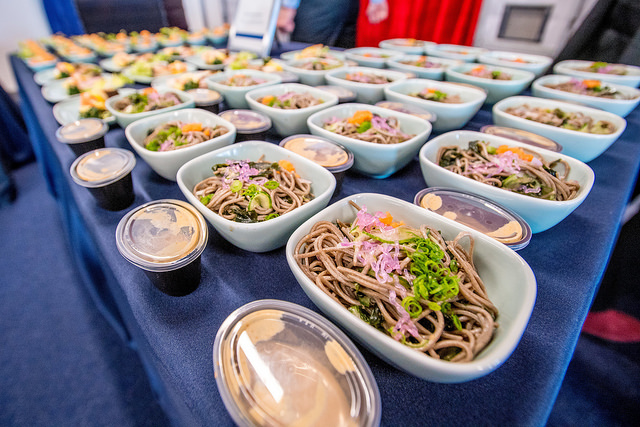You’ve heard that student loan debt is an ever ballooning American liability, topping $1 trillion in 2018 alone. But you may not have heard of another financial albatross for students—lunch debt. We know it’s squeezing school districts across the country—in some cases by as much as $500,000 in a single semester—but we don’t know how much it’s costing the United States economy as a whole.
According to data from the National School Lunch Program (NSLP), nearly 100,000 schools and education institutions provide lunch to 30 million students a day. Of those, the program estimates that as many as 20 million students receive lunch for free, 2 million pay a reduced price of 40 cents, and 8 million pay the full price.
But full-price lunch is for some families just too steep. School lunch costs for students vary by state and district, but on average, a single meal costs students $2.48 at the elementary-school level and $2.74 at the high-school level. One school in California reportedly charges its students up to $6.80 for a single meal. That may not sound like a lot, but over time—and in some cases, because a family is providing for multiple children—school lunch can get very expensive.
Though, not just for families. For schools, too. In the contiguous 48 states, for instance, the United States Department of Agriculture (USDA), which administers the federal school lunch program, reimburses schools for lunch expenditures based on what percentage of their student body is paying the full price, a reduced price, or nothing at all for a meal. Reimbursements range from 30 cents to $3.54 per student.
Students who are not enrolled in federally subsidized free or reduced-price meal plans at their schools typically put funds for breakfast and lunch into meal accounts. Those work the same way any account does: when the funds are depleted, the bills accumulate. And that debt accrual puts an increasing burden on schools that bear it, sometimes to the tune of tens or even hundreds of thousands of dollars for a single district. In late December, The Washington Post reported that K-12 students in the D.C. area owe a collective $500,000 in unpaid lunch debt for the first semester of the current academic year alone.
In our own year-end food reporting round-up, we noted that school lunch debt has risen steeply in a few school districts across the country, seemingly in conjunction with the passage of recent laws that ban “lunch-shaming.” The term refers to an uncomfortable range of practices that schools have traditionally used to punish students for unpaid lunch debt, from serving cold sandwiches in place of a hot meal, to denying them a meal entirely.
In recent years, more and more jurisdictions, including Washington, D.C., have outlawed lunch-shaming for being stigmatizing and abusive. Where the practice is banned, schools are required to serve hot meals to students regardless of their ability to pay.
However, schools now grapple with another issue: Median lunch debts have risen to $2,500 per school, up from $2,000 in 2016 and 2014, according to a bi-annual School Nutrition Association (SNA) survey of its nearly 1,500 member school districts. The amount of unpaid student meal debt is also directly correlated with school district size, the SNA report found.
Schools have tried lots of approaches to obliterating these debts, some more egregious than others. In Rhode Island, for instance, the Cranston School District hired a collection agency to recoup the funds. And in Columbus, Ohio, where The Columbus Dispatch reported that 90 percent of parents who were behind on lunch payments owed less than $50, a collection agency was dispatched to notify credit ratings agencies of the delinquencies.
School districts in other states have resorted to crowdfunding and philanthropic giving to clear their books.
What else can they do? First, let’s avoid regression, says Diane Pratt-Heavner, director of media relations for SNA. To suggest that a return to lunch-shaming is the only solution to resolving school lunch debt would be completely miss the point of school nutrition in the first place, she says.
“School meals are just as important to student success as textbooks and teachers in the classroom,” Pratt-Heavner tells me. “Kids need to have nourishment to be able to focus in class. Ideally, we’d be providing meals as part of the daily educational services.”
Some school systems, including all New York City schools and most D.C.-area schools, are able to provide free lunch to all students because their corresponding poverty rates are so high. In other cases, students living in households that meet the federal poverty guidelines—currently at $25,100 for a family of four—can apply for free or reduced-price lunches.
According to SNA, over 40 percent of school districts have seen an increase in the number of students who are not certified for free meals and do not have the funds to pay. But that doesn’t necessarily indicate their families are economically secure. Free and reduced-price school lunch programs pose some serious barriers to access. For one, application forms can be complicated and confusing. But perhaps more revealing is that many families claim just enough income to surpass the threshold for free lunch, while still living with grave economic uncertainty—grave enough that they cannot afford to pay for lunch at all.
There’s another reason we can expect that number to grow in the coming months, and it’s linked to the Trump administration’s approach to the federal food safety net as it’s being used by immigrants. Currently, children whose families participate in the Supplemental Nutrition Assistance Program (SNAP, formerly food stamps) are automatically eligible for free school lunch. In September, right at the start of the current school year, the administration announced that immigrants’ legal use of SNAP would count against them in future green card applications. Shortly after that, the number of immigrant mothers participating in SNAP plummeted.
All this means that some children of immigrants may no longer participate in the program. While it’s true that their parents can still file applications for free or reduced-price school lunch for their children, Pratt-Heavner tells me that the spectre of more restrictive SNAP policies are already having a chilling effect on access.
“If they’re too afraid of potentially impacting their future legal status by completing applications and identifying themselves as participating in any kind of federal government assistance, you’re going to see families dropping out,” she says, noting that school districts that serve large immigrant communities are already seeing this play out.
Currently, there’s only one way that schools have been able to wipe out student lunch debt entirely: charity. According to SNA, more than 53 percent of districts have received donations specifically earmarked to help mitigate student lunch debt. There have been contributions from individual good samaritans and corporate donations, too. But most people agree that philanthropy alone isn’t a sustainable solution to the school lunch debt problem.
That brings us around to the bigger conundrum—and a potential opportunity. No one really knows just how much lunch debt there is nationwide. In both research and interviews, I was unable to find an estimate of the scope of cumulative student lunch debt across the country. Tens of millions of dollars? Hundreds of millions? The Department of Education (DOE) has made us all aware of the national student loan debt tally. But the United States Department of Agriculture (USDA), which runs the national school program, is best positioned to collect and release data on student lunch debt.
Currently, it does not.










